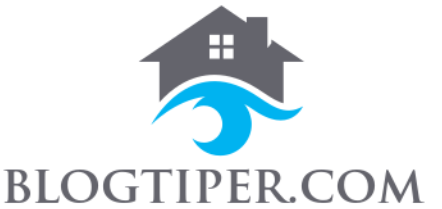Introduction
Public liability insurance is an essential form of protection for businesses. It safeguards against potential financial losses arising from third-party property damage or bodily injury claims. Determining the appropriate amount of public liability insurance coverage can be challenging. In this article, we will explore the factors to consider when assessing your public liability insurance needs, understanding coverage limits, evaluating assets and exposures, balancing coverage and affordability, and seeking professional advice.
Assessing Your Business Risks
Nature of Your Business
Consider the nature of your business operations. Industries such as construction, manufacturing, and hospitality may inherently involve higher risks compared to office-based professions. Evaluate the potential hazards and the likelihood of accidents or incidents that may result in liability claims.
Size of Your Business
The size of your business also plays a role in determining the appropriate coverage. Larger businesses typically have higher risks due to increased operations, larger customer bases, and more employees. Assess the scale of your business and the potential impact of liability claims on your financial stability.
Types of Clients or Customers
The type of clients or customers you serve can influence your liability risks. Businesses dealing with high-value assets or providing professional services may face greater potential liabilities. Assess the types of clients or customers you work with and the potential risks associated with your interactions with them.
Understanding Coverage Limits
Legal Requirements
Research the legal requirements for public liability insurance in your jurisdiction. Some industries or professions may have specific coverage obligations mandated by law. Ensure that your insurance coverage meets the minimum requirements set by regulatory authorities.
Contractual Obligations
Review your contractual agreements with clients, suppliers, or business partners. Contracts may specify the minimum level of public liability insurance coverage you must maintain. Failure to meet these contractual obligations may result in legal disputes or the loss of business opportunities.
Potential Liability Claims
Consider the potential severity and frequency of liability claims in your industry. Research historical data, industry trends, and legal precedents to gain insights into the potential damages awarded in liability claims related to your line of business. This information can help you determine appropriate coverage limits.
Evaluating Your Assets and Exposures
Value of Assets
Assess the value of your business assets, including property, equipment, inventory, and intellectual property. Consider the potential financial losses that may result from damage or loss of these assets. Ensure your coverage limits adequately protect the value of your assets.
Projected Income
Evaluate your projected income and revenue streams. A liability claim can result in loss of income or business interruption. Consider the potential impact on your financial stability and select coverage limits that account for this risk.
Potential Damages
Examine the potential damages that may arise from liability claims. This includes medical expenses, property repairs, legal fees, and compensation awards. Understanding the potential financial exposures will help determine the appropriate coverage limits.
Balancing Coverage and Affordability
Cost of Insurance Premiums
Consider the cost of insurance premiums when selecting coverage limits. Higher coverage limits typically come with higher premiums. Assess your budget and strike a balance between the coverage you need and what you can afford. It may be worthwhile to obtain quotes from multiple insurance providers to compare prices.
Deductibles and Policy Limits
Evaluate the deductibles and policy limits associated with different coverage options. A higher deductible can lower your premium but may require you to pay more out of pocket in the event of a claim. Policy limits should align with your assessed risks and potential financial exposures.
Risk Management Strategies
Implement risk management strategies to reduce your overall liability risks. This may include implementing safety protocols, employee training programs, and maintaining accurate records. Insurance providers may offer premium discounts for businesses that demonstrate effective risk management practices.
Seeking Professional Advice
Consult with an insurance professional or broker specializing in liability insurance. They can assess your specific business needs, evaluate your risks, and provide expert guidance on the appropriate coverage limits. Their knowledge and experience will help ensure that you make informed decisions about your insurance coverage.
Frequently Asked Questions (FAQs)
- What factors should I consider when determining my public liability insurance needs?
- Factors to consider include the nature of your business, the size of your business, and the types of clients or customers you serve. Additionally, legal requirements, contractual obligations, and the potential severity of liability claims should be evaluated.
- How do I assess the value of my assets and potential damages?
- Work with financial professionals, appraisers, or industry experts to assess the value of your assets. Research historical data, industry trends, and legal precedents to understand the potential damages that may arise from liability claims.
- Can I adjust my coverage limits over time?
- Yes, you can adjust your coverage limits as your business evolves. Regularly review your insurance coverage and reassess your risks to ensure that your coverage remains appropriate for your changing needs.
- Are there industry-specific public liability insurance requirements?
- Yes, certain industries or professions may have specific public liability insurance requirements mandated by law or industry regulations. Research the requirements specific to your industry to ensure compliance.
- Why is seeking professional advice important when determining coverage limits?
- Insurance professionals or brokers have expertise in liability insurance and can provide tailored advice based on your business needs. They can help you understand complex policy terms, assess your risks accurately, and ensure that your coverage adequately protects your business.
Conclusion
Determining the appropriate amount of public liability insurance coverage requires careful consideration of various factors. Assess your business risks, understand coverage limits, evaluate your assets and exposures, and balance coverage with affordability. Seek professional advice to ensure that you make informed decisions about your insurance needs. By finding the right coverage, you can protect your business from potential financial losses and operate with confidence.
